Text
A Time to Reflect
Take a sit and have a moment to reflect…
Barangay 471 is just a small community, but they continue to do their best despite of their size. They ensure the safety of their residents and they plan ahead. There may be flaws and shortcomings here and there, but they’re trying their best. Although there may be some issues like theft in the area or through natural ones like calamities and disasters, these help shape the community to be more alert, vigilant and prepared so that they could already expect the worst and to immediately take action.
When it comes to the national level, I believe that everyone is doing their part in order to keep safe. We are a lot more knowledgeable than before and we will continue to be because of the ever-evolving technology that helps us during times of need. We must face these issues of disaster through careful research, observation, and preparedness so that the risks may be lessened or even prevented. As a member of this community, it is important that we should all be responsible and we must obey the orders of our officials because it is for our safety.
0 notes
Text
Barangay 471 Through My Lens
Let me walk you through the streets of Barangay 471!
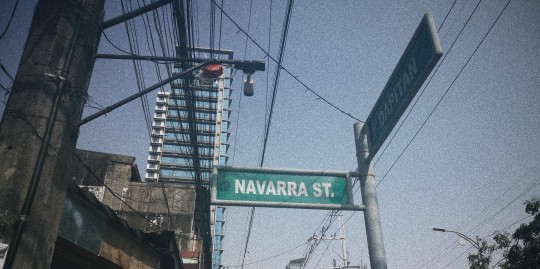
Hazardous Places
These are some hazardous places that I’ve seen in Barangay 471, the electrical cables connected to the utility poles are intertwined and as you can see from the picture attached, there are numerous cables which I think can cause harm in the future.
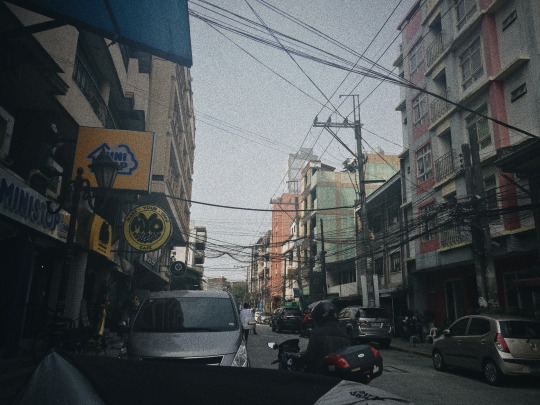

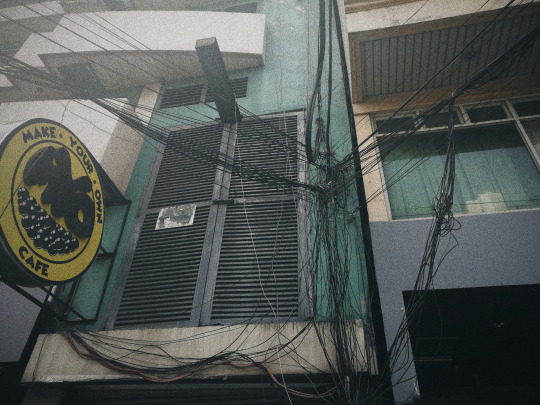
Safest Spaces
The University of Santo Tomas Field is one of the safest spaces in the community as it serves as an evacuation center when a calamity such as an earthquake happens.
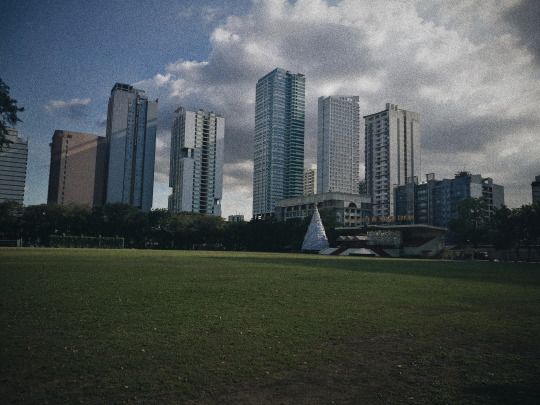
Best Practices
The community’s best practices are their projects like their weekly clean-up and drives and de-clogging of drainage systems.
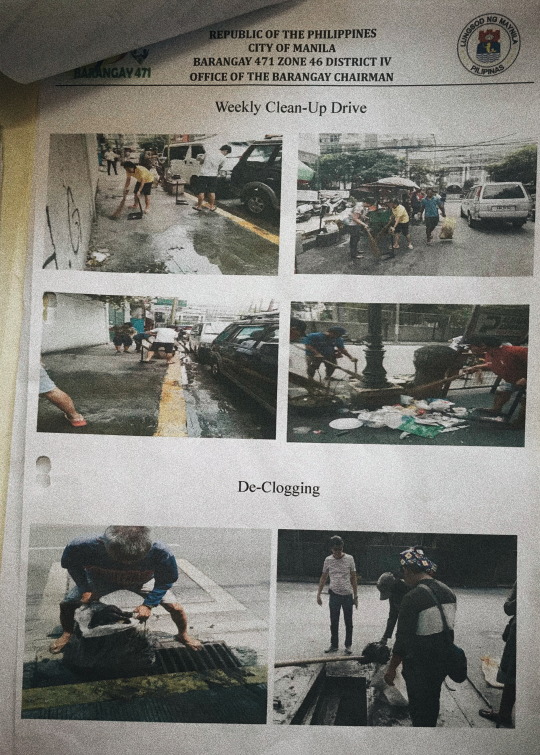
0 notes
Text
BDRRM Sessions
A guide through Barangay 471′s BDRRM plans
Last December 6, 2019, I was given a chance to interview Kagawad Babilon ‘Bobby’ Lorica of Barangay 471 to discuss about the Barangay’s DRRM plans. The reason for this interview was to fulfill my NSTP course’s module.
Upon arriving the area, I could easily locate where the Barangay Hall was. The Barangay Hall is fairly small, and the first thing that you will see is the front desk. I was greeted by Kagawad Bobby Lorica, I greeted him and I told him that I was from UST and I asked him if he had the time so that I could interview him for my NSTP course. When I mentioned NSTP, he immediately pulled out a bunch of papers and a brown folder that contains the the Barangay’s DRRM plans. I was surprised and I asked him if there were other UST students who came to conduct interviews for their NSTP course and he said yes.
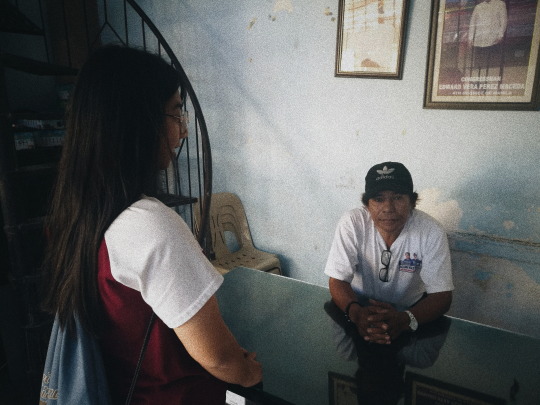
During the interview, I got to learn about how a barangay prepares for risks. A little fact about me is that I grew up in the Middle East so it was my first time actually learning first-hand about how barangays prepare for calamities, hazards, and risks. The following statements are a summary of what I got from the interview:
Hazard Identification
Floods and earthquakes have been experienced by the barangay numerous times. Also, they have experienced crimes such as theft. The barangay is notified about incoming calamities through government agencies and through other forms of media (e.g. television, news reports, PAG-ASA, NDRRMC, etc.) The barangay often experiences rain (due to typhoons) and sometimes earthquakes which we never know when it will actually happen so the barangay conducts earthquake drills so that everyone is prepared.
Vulnerability, Elements and People at Risk Assessment
People who live in low areas are likely to be greatly affected by floods. Houses that are poorly built or houses that don’t have a strong foundation can also be destroyed by fires and earthquakes. Once these disasters hit, people who earn a living in the area will be very affected. Elderly, PWDs, and pregnant women will also be very affected and they should be prioritized in times like this.
Capacity and Disaster Management Assessment
Barangay 471 has a lot of programs and projects when it comes to their DRRM, earthquake drills are conducted to ensure that residents know what to do when an earthquake happens. Kagawad Bobby also gave me a list about their Barangay’s plans which are the following:
1. Evacuation Centers
a. Flood: Barangay Hall 2nd & 3rd Flr
b. Fire: Barangay Hall 2nd & 3rd Flr
c. Earthquake: UST Football Field
2.Transportation
a. Barangay Patrol Trycicles
3.Equipment
a. Two-way Radio
b. Megaphone
c. First aid Kit
d. Fire Extinguisher
e. BP. Apparatus
f. Flashlight
4. RAHA Fire Station
5. 2019 1st qtr Nationwide Simultaneous Earthquake Drill
6. Declogging
7. Declogging Materials
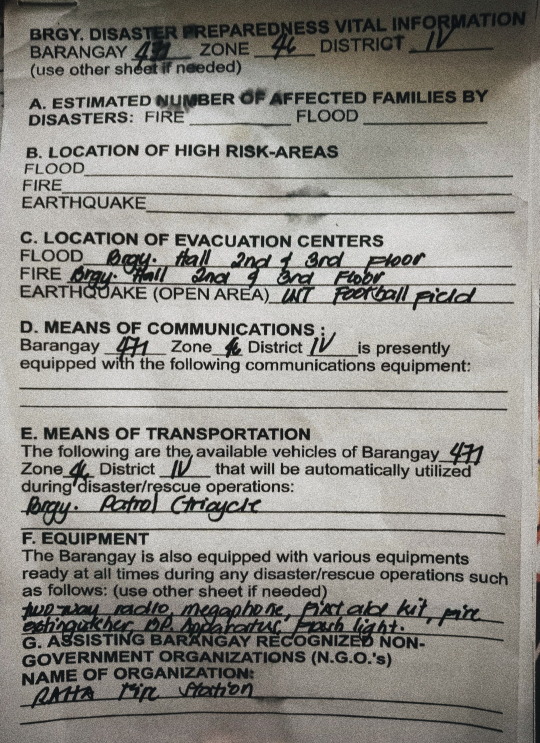
Kagawad also gave me a list of the people who were in charge to respond to these calamities:
Barangay Disaster Coordinating Council (BDCC)
Over all Chairman: Osmundo J. Perez
Service Teams:
Lito Espera (Warning Service Leader)
Babilon Lorica (Rescue and Evacuation Service Leader)
Chona Regino (Disaster and Supply Service Leader)
Adelaida Rabe (Medical Service Leader)
Alfonso Adalia (Fire Brigade Leader)
Lito Espera (Damage Control Service Leader)
Evelyn Rodriguez (Security Service Leader)
Emerita Caraig (Transportation and Communication Service)
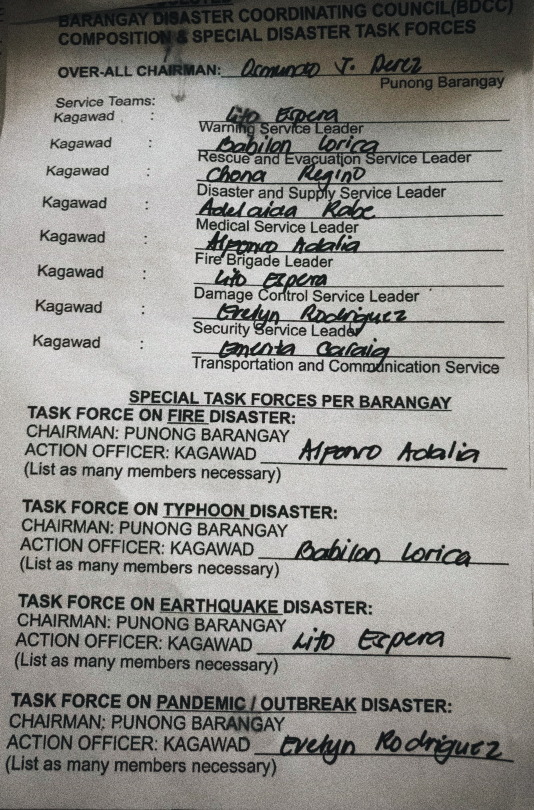
The interview ended successfully and I thanked Kagawad Bobby for his time. It was truly an eye opener for me to be able to know how much time and effort this barangay officials do in order to ensure the safety of its residents.
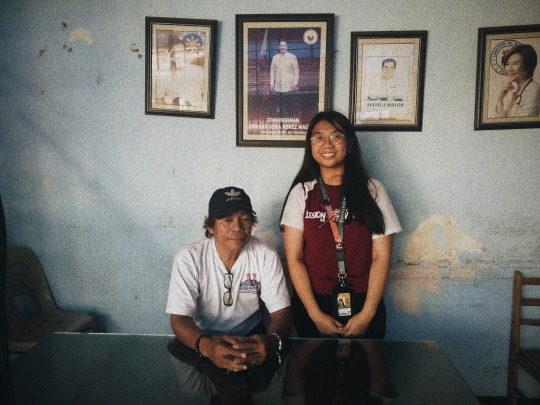
0 notes
Photo
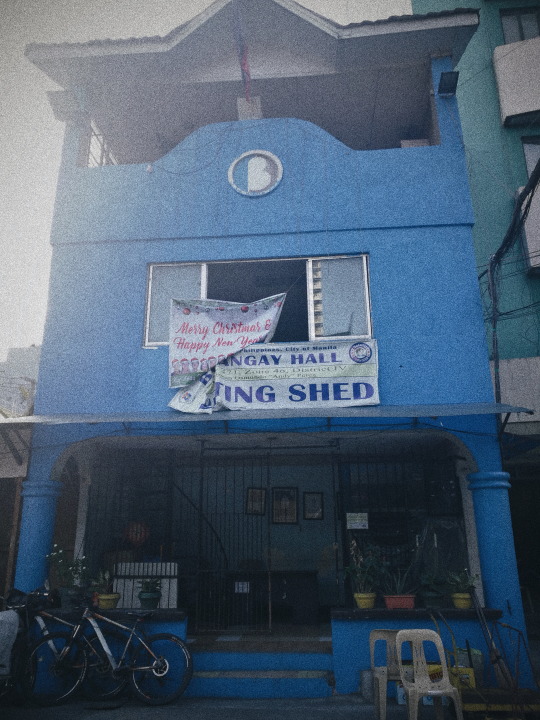
Barangay Hall of Barangay 471, Zone 46, District IV, Navarra St., Sampaloc, Manila
0 notes
Text
What is BDRRM?
BDRRM stands for Barangay Disaster Risk Reduction Management and it aims to help the barangay become prepared when it comes to calamities and risks.
0 notes